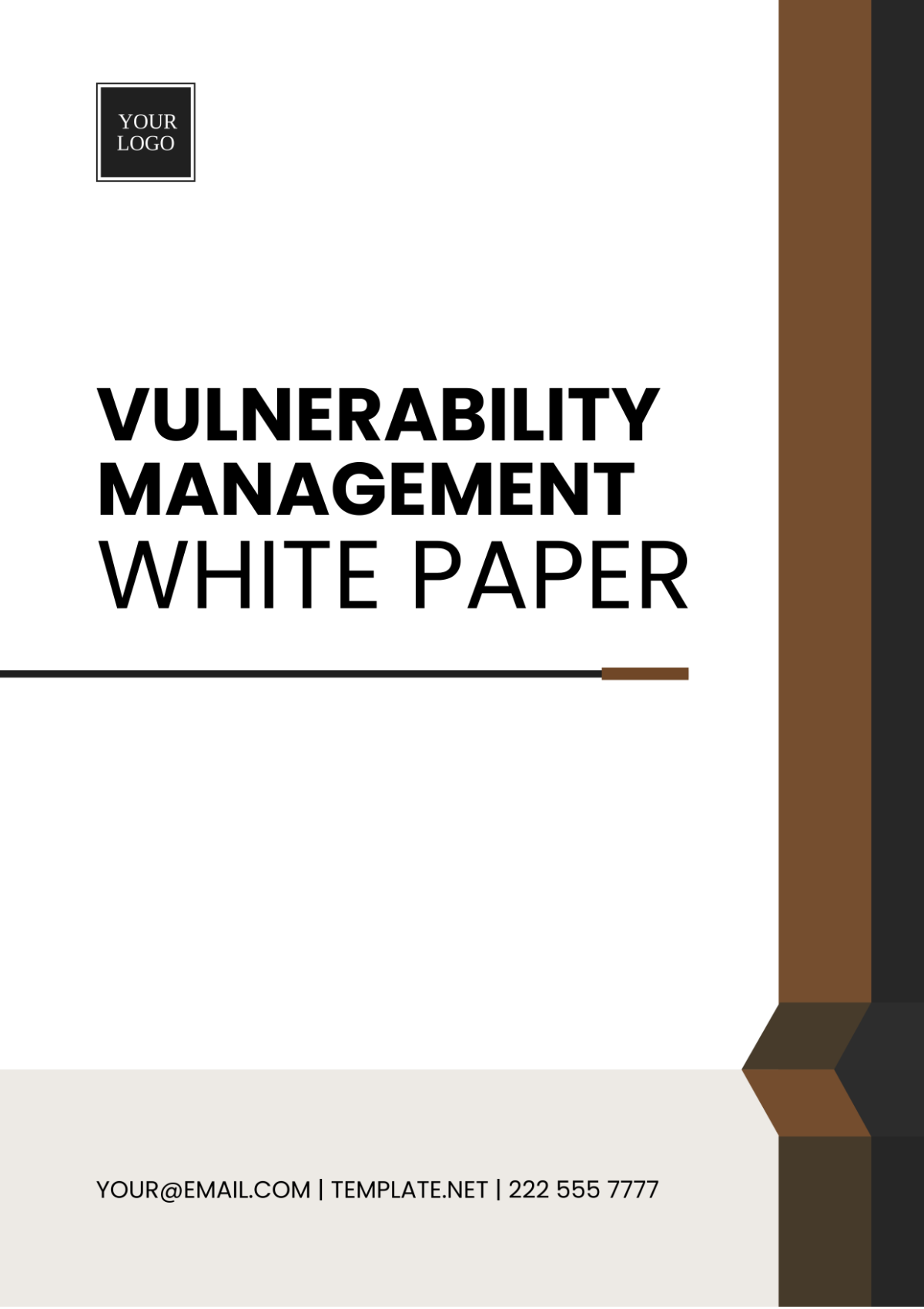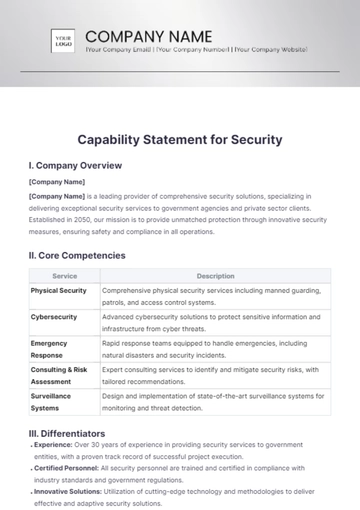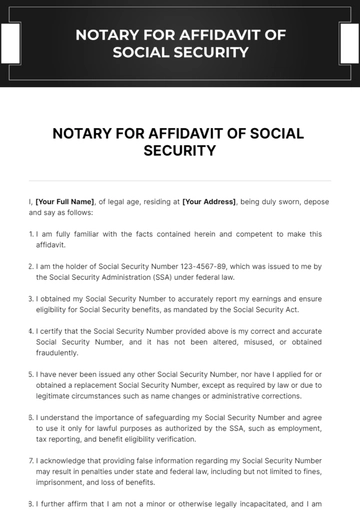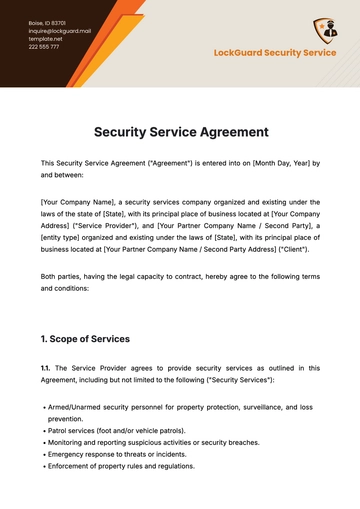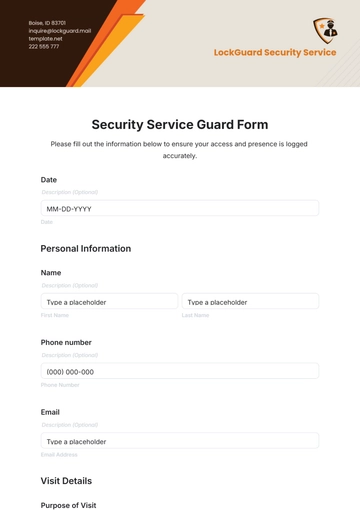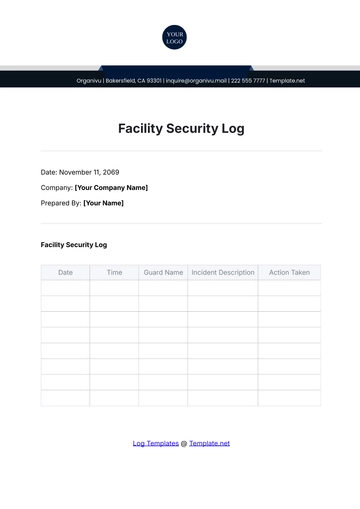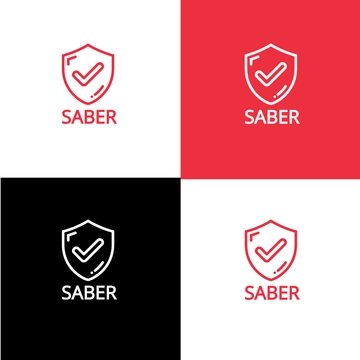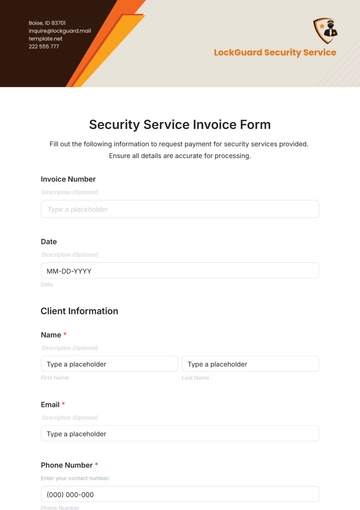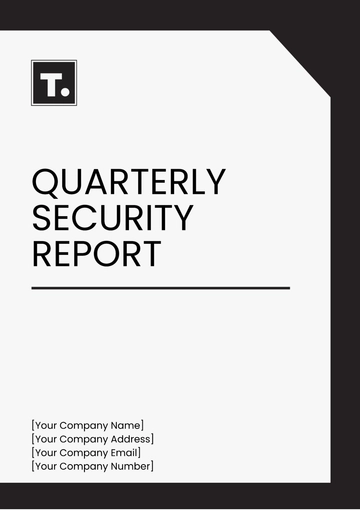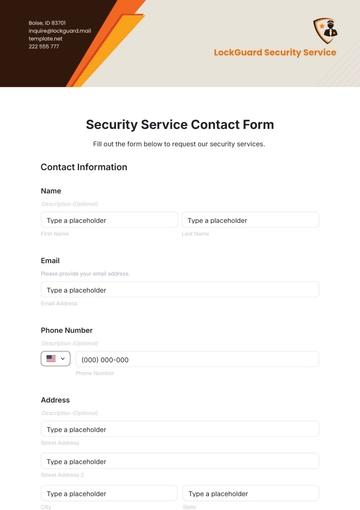Vulnerability Management White Paper
Vulnerability Management: Enhancing Cybersecurity Resilience
Prepared by: [YOUR NAME]
Company: [YOUR COMPANY NAME]
Department: [YOUR DEPARTMENT]
Date: [DATE
I. Executive Summary

In today's digital era, the proliferation of cyber threats poses significant challenges to organizations worldwide. Vulnerability management emerges as a cornerstone strategy in fortifying cyber defenses and safeguarding critical assets from exploitation. This white paper delves into the pivotal role of vulnerability management in bolstering cybersecurity resilience and offers comprehensive insights into its core principles and best practices.
II. Introduction
In today's digital landscape, organizations face an ever-evolving array of cyber threats. Effective vulnerability management is paramount to safeguarding sensitive data, maintaining operational continuity, and preserving customer trust. This white paper explores the critical components of a robust vulnerability management program and outlines best practices for implementation.
III. Understanding Vulnerabilities
A. Definition and Types
Vulnerabilities represent weaknesses in software, hardware, or network configurations that can be exploited by attackers. Common types of vulnerabilities include:
Software Vulnerabilities: Flaws in software code or applications that can be exploited by attackers to gain unauthorized access or disrupt operations.
Hardware Vulnerabilities: Weaknesses in hardware components such as processors, memory, or firmware that can be exploited to compromise system integrity.
Configuration Vulnerabilities: Insecure configurations or settings that expose systems to potential exploitation, such as default passwords or misconfigured firewall rules.
B. Risk Implications
Identifying vulnerabilities is essential for assessing the potential impact on organizational risk. Understanding the risk implications involves:
Threat Assessment: Evaluating the likelihood and severity of potential threats based on factors such as threat actor capabilities and motivations.
Asset Prioritization: Determining the criticality of assets affected by vulnerabilities to prioritize remediation efforts effectively.
Impact Analysis: Assessing the potential consequences of exploitation, including financial losses, reputational damage, and regulatory penalties.
IV. The Vulnerability Management Lifecycle
A. Discovery
The discovery phase involves:
Automated Scanning: Utilizing scanning tools such as vulnerability scanners or network scanners to identify vulnerabilities across the network automatically.
Manual Assessment: Conducting manual reviews of critical systems and applications to identify vulnerabilities that may not be detected by automated tools.
B. Prioritization
Prioritization is key to effectively managing vulnerabilities. Considerations include:
CVSS Score: Assessing vulnerabilities based on the Common Vulnerability Scoring System (CVSS) score to prioritize remediation efforts based on the severity of the vulnerability.
Business Impact: Aligning remediation efforts with organizational priorities by considering the potential impact of a vulnerability on business operations, data confidentiality, and regulatory compliance.
Exploitability: Evaluating the ease with which vulnerabilities can be exploited by threat actors to prioritize patches or security controls that address the most critical risks first.
C. Remediation
The remediation phase encompasses:
Patch Management: Applying patches and updates provided by software vendors to mitigate identified vulnerabilities and eliminate security gaps.
Configuration Changes: Modifying system configurations, such as disabling unnecessary services or tightening access controls, to reduce the attack surface and prevent exploitation.
Security Controls: Implementing additional security controls, such as intrusion detection systems (IDS) or endpoint protection solutions, to mitigate risks and enhance the overall security posture.
V. Best Practices for Vulnerability Management
A. Continuous Monitoring
Establishing a culture of continuous monitoring involves:
Real-time Alerts: Implementing systems to detect and respond to emerging threats in real-time, such as security information and event management (SIEM) solutions or intrusion detection systems (IDS).
Periodic Assessments: Conduct regular vulnerability scans and assessments, such as weekly or monthly vulnerability scans, to identify new vulnerabilities or changes in the threat landscape.
Threat Intelligence Integration: Incorporating threat intelligence feeds from reputable sources, such as industry groups or government agencies, to enhance detection capabilities and stay informed about emerging threats.
B. Collaboration and Communication
Effective communication and collaboration are essential for successful vulnerability management. Strategies include:
Cross-Functional Teams: Establishing cross-functional teams comprising representatives from IT, security, and business units to facilitate collaboration and ensure alignment between security goals and business objectives.
Incident Response Planning: Develop incident response plans and protocols to facilitate timely response and recovery in the event of a security incident, such as a data breach or cyber attack.
Training and Awareness: Providing regular training and awareness programs to educate employees about security best practices, such as how to recognize phishing emails or report suspicious activity, and their role in supporting the organization's cybersecurity efforts.
VI. Conclusion
A proactive approach to vulnerability management is essential for mitigating cyber risks and safeguarding organizational assets. By implementing robust processes, leveraging automation, and fostering a culture of collaboration, organizations can enhance their cybersecurity resilience and protect against evolving threats.

VII. References
Shostack, A. (2014). Threat Modeling: Designing for Security. Wiley.
National Institute of Standards and Technology. (2012). NIST Special Publication 800-30: Guide for Conducting Risk Assessments.
Veracode. (2023). State of Software Security Report.
White Paper Templates @ Template.net
